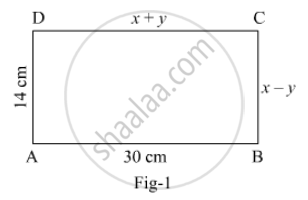Topics
Number Systems
Real Numbers
Algebra
Polynomials
Pair of Linear Equations in Two Variables
- Introduction to linear equations in two variables
- Graphical Method
- Substitution Method
- Elimination Method
- Cross - Multiplication Method
- Equations Reducible to a Pair of Linear Equations in Two Variables
- Consistency of Pair of Linear Equations
- Inconsistency of Pair of Linear Equations
- Algebraic Conditions for Number of Solutions
- Simple Situational Problems
- Pair of Linear Equations in Two Variables
- Relation Between Co-efficient
Quadratic Equations
- Quadratic Equations
- Solutions of Quadratic Equations by Factorization
- Solutions of Quadratic Equations by Completing the Square
- Nature of Roots of a Quadratic Equation
- Relationship Between Discriminant and Nature of Roots
- Situational Problems Based on Quadratic Equations Related to Day to Day Activities to Be Incorporated
- Application of Quadratic Equation
Arithmetic Progressions
Coordinate Geometry
Lines (In Two-dimensions)
Constructions
- Division of a Line Segment
- Construction of Tangents to a Circle
- Constructions Examples and Solutions
Geometry
Triangles
- Similar Figures
- Similarity of Triangles
- Basic Proportionality Theorem (Thales Theorem)
- Criteria for Similarity of Triangles
- Areas of Similar Triangles
- Right-angled Triangles and Pythagoras Property
- Similarity of Triangles
- Application of Pythagoras Theorem in Acute Angle and Obtuse Angle
- Triangles Examples and Solutions
- Concept of Angle Bisector
- Similarity of Triangles
- Ratio of Sides of Triangle
Circles
Trigonometry
Introduction to Trigonometry
- Trigonometry
- Trigonometry
- Trigonometric Ratios
- Trigonometric Ratios and Its Reciprocal
- Trigonometric Ratios of Some Special Angles
- Trigonometric Ratios of Complementary Angles
- Trigonometric Identities
- Proof of Existence
- Relationships Between the Ratios
Trigonometric Identities
Some Applications of Trigonometry
Mensuration
Areas Related to Circles
- Perimeter and Area of a Circle - A Review
- Areas of Sector and Segment of a Circle
- Areas of Combinations of Plane Figures
- Circumference of a Circle
- Area of Circle
Surface Areas and Volumes
- Surface Area of a Combination of Solids
- Volume of a Combination of Solids
- Conversion of Solid from One Shape to Another
- Frustum of a Cone
- Concept of Surface Area, Volume, and Capacity
- Surface Area and Volume of Different Combination of Solid Figures
- Surface Area and Volume of Three Dimensional Figures
Statistics and Probability
Statistics
Probability
Internal Assessment
Notes
In the earlier concepts, we studied three methods to solve the Linear Equations, where we were directly provided with a linear equation which was in a standard form, i.e. `a_1x+b_1y+c_1=0` and `a_2x+b_2+c_2=0`. Here, in this concept, we are required to reduce the given question into a proper linear equation and then solve it.
Example- `1/"x-1" + 2/"y-2" = 2` and `3/"x-1" - 3/"y-2" = 1`
First, we need to reduce this equation in `a_1x+b_1y+c=0` and `a_2x+b_2y+c_2=0`
For that, let's take `1/"x-1"` = m and `1/"y-2"` =n
So the equation becomes like, `m+2n=2` ....eq1
and `3m-3n=1` ....eq2
By solving further, we get `m=2-2n`, substituting this in eq2
`3(2-2n)-3n=1`
`6-6n-3n=1`
`-9n= 1-6`
`n= (-5)/-9` i.e. `5/9`
Substitute `n=5/9` into eq1
`m+2(5/9)=2`
`m+ 10/9= 2`
`m= 2-10/9`
`m= 8/9`
Now we will resubstitute the values of m and n in the original equations.
`1/"x-1"= 8/9`
`8x-8= 9`
`8x=17`
`x=17/8`
And `1/"y-2"= 5/9`
`5y-10= 9`
`5y= 9+10`
`y= 19/5`

